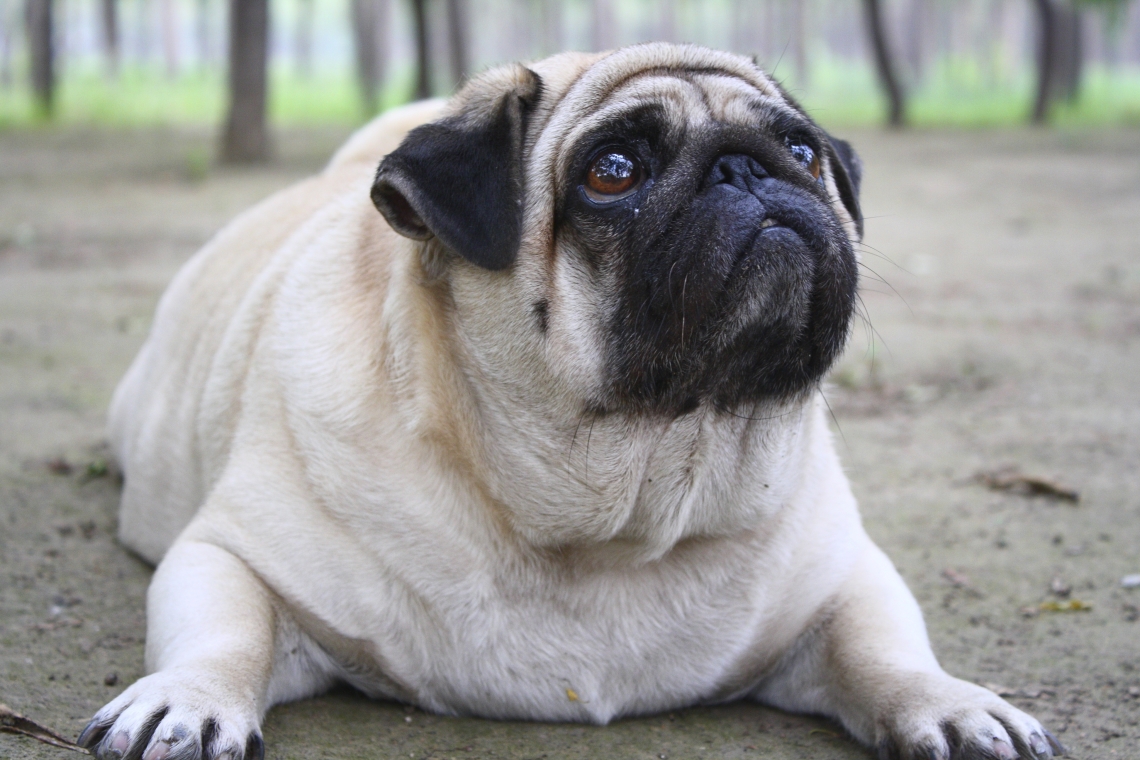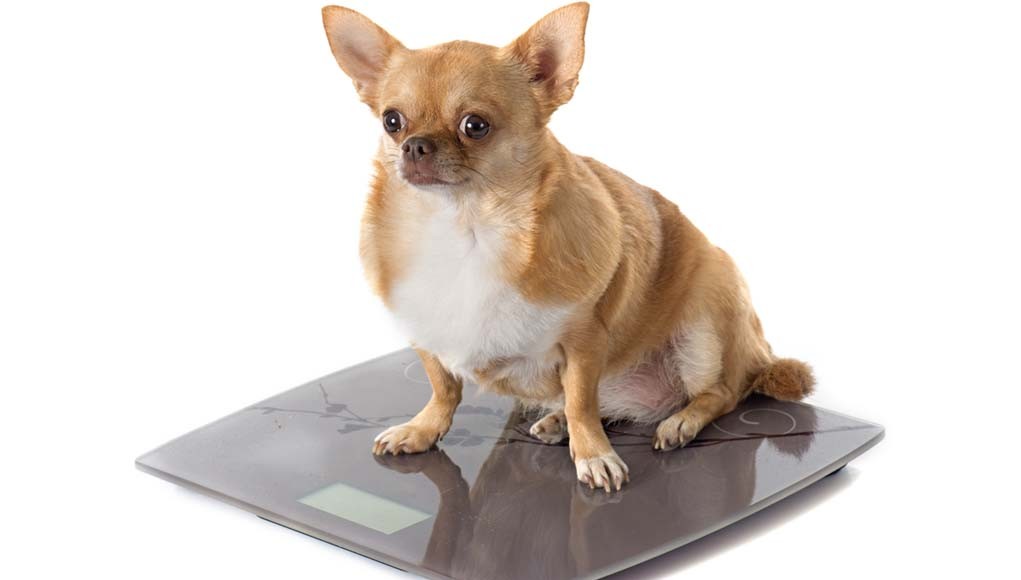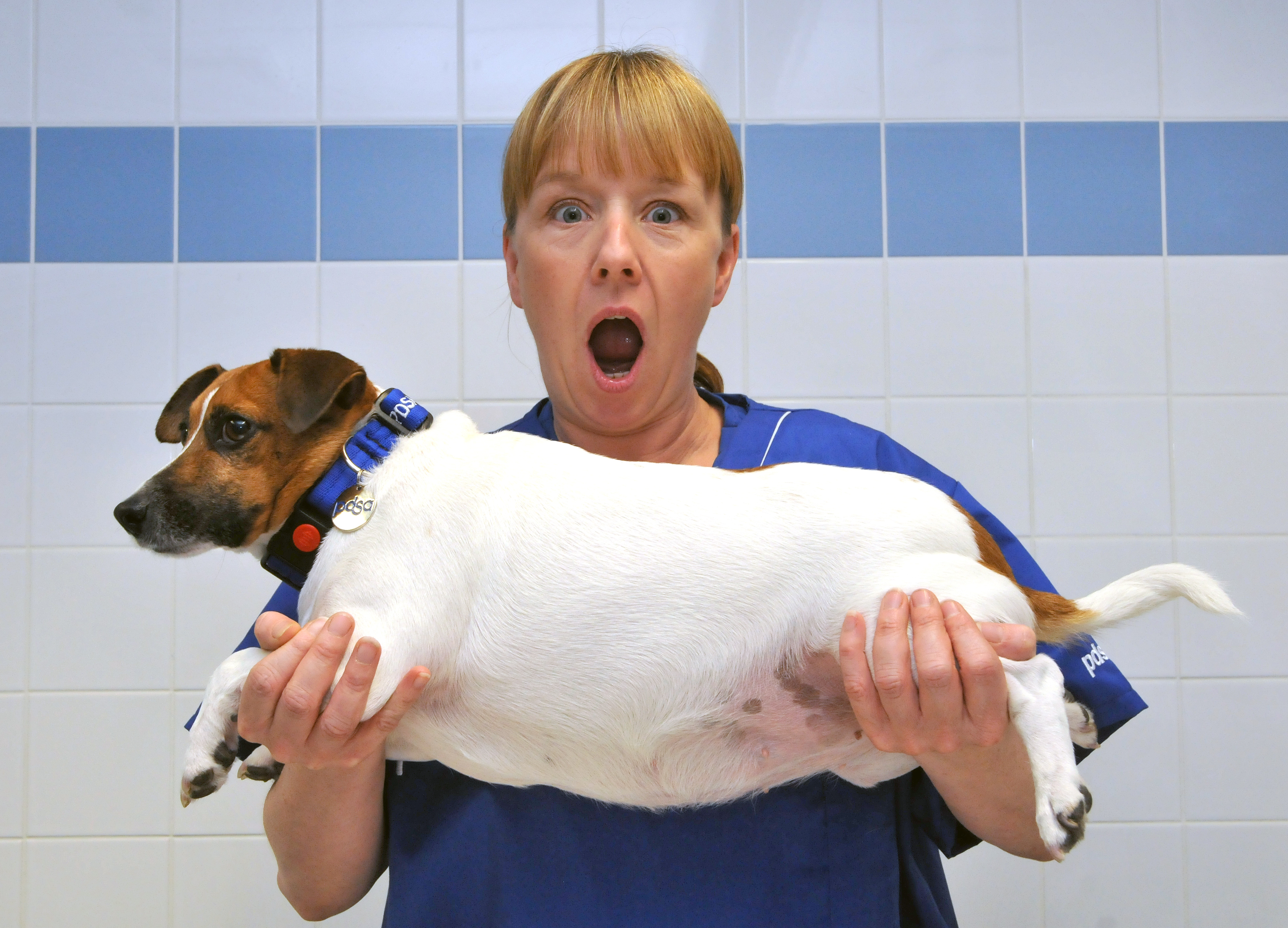Dog obesity is a growing problem. The PDSA Animal Wellbeing (PAW) Report 2015 (download it here), found that 46% of pet owners think obesity will be the biggest threat to animal welfare in the next ten years, and the veterinarian professionals seem to agree.
Dog obesity leads to problems with diabetes, heart and respiratory disease, high blood pressure, osteoarthritis, kidney disease, cancer and often results in a shorter life expectancy.
Although any breed of dog can become obese, some breeds are prone to piling on the pounds more than others:
- Basset Hound
- Beagle
- Boxer
- Bull Terrier
- Cairn Terrier
- Cavalier King Charles Spaniel
- Chihuahua
- Cocker Spaniel
- Dachshund
- English Bulldog
- Golden Retriever
- Labrador Retriever
- Pug
- Pit Bull
- Rottweiler
- Scottish Terrier
- Staffordshire Bull Terrier
- St. Bernard
Dr Ward of the Association for Pet Obesity Prevention (APOP) claims that:
“The biggest problem is that by the time most people recognise the problem, it’s often too late.”
Dog obesity: prevention is key
The two main causes of dog obesity are food and exercise.
Food
How much should I feed my dog?
Many dog owners aren’t aware of correct portion size and control. You should only feed your dog according to the guidelines at first and monitor your dog’s weight with your vet. This diagram is super-helpful for a visual guide:
As easy as it is giving in to those puppy-dog eyes, always feed treats in moderation and never guesstimate the amount fed – always measure precisely according to your vet’s advice.
What type of food should I feed my dog?
Type of food is just as important as the amount you feed. A shocking 2.6 million dogs are fed scraps and leftovers as their main meal.
There is no one correct diet for all dogs because dogs are individuals and do better on different diets. It’s all about trial and error. The many various types of dog foods on the market can be overwhelming, but they can all be categorised into one of the following:
- Wet foods – pouches, tins.
- Raw foods – the fastest growing food trend; raw foods can be purchased in the freezer section at many pet shops.
- Complete foods – the most popular choice of food fed, these foods can be wet, dry or raw and contain every nutrient needed for your dog.
- Complementary and Mixer foods – these don’t contain all the nutrients required so have to be mixed with other wet or raw foods.
- Dry foods – the highest saturation of the dog food market, dry foods can be categorised into these groups:
- Baked
- Air dried
- Cold pressed
- Extruded
Exercise
The PDSA report also announced that the amount of dogs receiving more than 10 minutes of off-lead exercise daily has dropped from 71% to 66% in the last five years. That’s over 2.7 million dogs going without adequate daily exercise. If you’re looking for some sweat-burning inspiration, check out our article on how to get your dog to join in with your exercise here.
Over to you
What do you feed your dog? Share your tips and tricks for keeping the weight off your pup with our community below.



